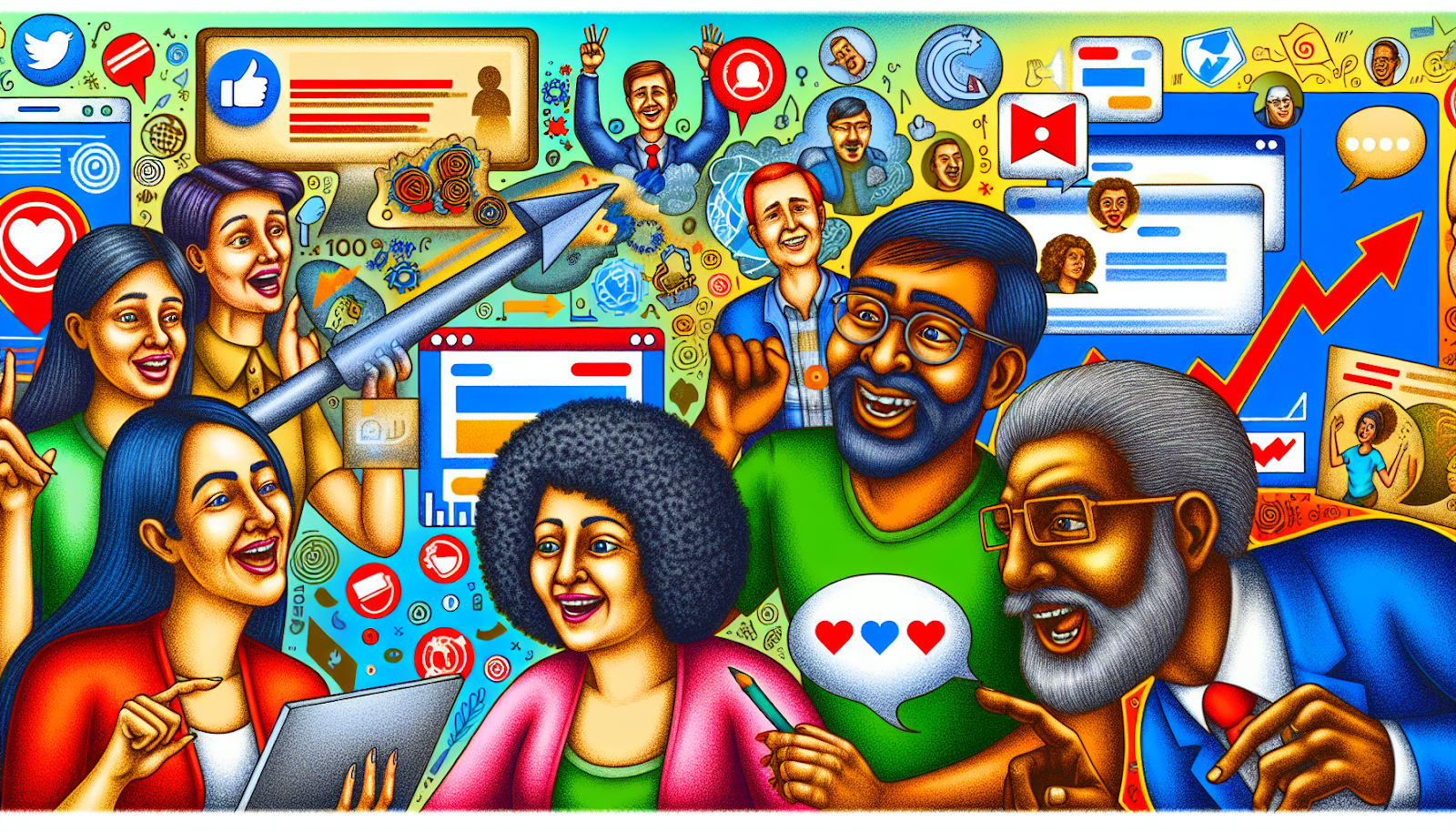The 10 Amazing Benefits of Peer-to-Peer Recognition in the Workplace
Tap Into the Power of Peer-to-Peer Recognition to Boost Motivation and Productivity
Employee recognition is an essential aspect of company culture because it produces happy and appreciated staff.
Workers who feel recognized and respected by their superiors are more productive, work harder, are more motivated and stick around longer.
It's evident that employer recognition creates a more human-orientated workplace, but can peer-to-peer recognition produce similar results?
Absolutely!
Employees also require credit from fellow team members to feel like a vital part of the company. Those who receive dispositional gratitude from their peers are more likely to lead healthier lives.
While 81% of organizations have an employee-recognition program, less than half of those polled companies have a peer-to-peer component.
Let's examine why a peer-to-peer recognition program can benefit your workplace and produce happier employees.
What Is Peer-to-Peer Recognition?
A peer-to-peer recognition program allows employees to show appreciation for each other's work in public.
This differs from an employee-recognition program which places value on the input between an employee and employer.
Peer-to-peer doesn't place value on hierarchy. Instead, these programs create a space where employees can freely compliment each other through words or gifts.
Inspiring a culture of recognition is the single greatest thing you can do to protect your bottom line.
That's because 69% of employees state they would work harder if they felt appreciated and peer-to-peer approval is 35.7% more likely to improve financial results than manager-only recognition.
Embracing a workplace that centers on peer-to-peer recognition can improve multiple workplace factors, like increased customer satisfaction, job satisfaction and overall morale.
Setting Up a Peer-to-Peer Recognition Program
All businesses can create a peer-to-peer recognition program ingrained with the company's culture.
Being recognized by peers whom we trust and appreciate is essential to this exercise; you can standardize this practice by using software.
Employee-recognition software gives users monthly allowances that are cashed in for prizes, like extended time off, gifts or a catered lunch.
However, even a simple "nice job" from a team leader or peer can do wonders for an employee's self-esteem.
The Basis of a Peer-to-Peer Recognition Program
To create an effective program, make sure it includes the following steps:
- Set and define goals: Are you creating a peer-to-peer recognition program to improve workplace satisfaction, productivity or collaboration? Do you want to increase employee retention? Whatever your goals are, ensure they're clear and obtainable. For example, employees must receive one piece of positive feedback per campaign.
- Understand tools and methods: A business needs a centralized avenue for each employee to use for recognition. Whether it's an employee-recognition wall in the break room or a software, these should be accessible and viewable for all employees.
- Explain the program during a meeting: Don't just roll out the program. Ensure your employees understand how peer-to-peer recognition works and teach staff how to use the software or method for obtaining and delivering feedback.
- Lead by example: Employers should also give their employees feedback through a peer-to-peer system or other means. When your employees see you leading by example, they're more likely to participate in the program.
- Keep the program alive: Your employees aren't going to participate in the program without a bit of a push. Check in with your employees throughout the week to see if they're meeting the program goals or are recognizing their peers consistently.
It may be challenging to establish a routine with your employees at first, but eventually they'll find value in peer-to-peer recognition. So keep at it to see results!
The Multiple Benefits of Peer-to-Peer Recognition
Now that you know how to roll out your new peer-to-peer recognition program, we can discuss why it's essential to create one in the first place.
The following ten benefits will likely show up immediately if the employer is diligent in sustaining a peer-to-peer program.
1. Improved Relationships Between Coworkers
The increased positivity in the workplace can greatly improve the relationship between your employees.
A culture that isn't based on recognition can foster resentment if employees feel that they must constantly work hard to receive attention or affirmation.
However, if employees compliment small wins, like a great idea, they will build positive rapport quickly.
2. Employee Satisfaction Increases
A happy employee will feel more satisfied with their work and is more likely to stay productive throughout a campaign, which will impact future business outcomes.
On top of that, a satisfied employee will more likely continue the recognition-giving cycle.
3. Creates a Recognition-Giving Cycle
If recognition isn't just recommended but encouraged, employees are going to continue a recognition-giving cycle long term.
An employee that has been recognized by their peers is more likely to give recognition to someone else, but only if they are given praise publicly.
Employees consider public credit better than receiving it privately, regardless of who's giving the praise.
4. Promotes Company Values and Behavior
Most new employees have no idea how to act around their peers or employers. This doesn't imply they'll cause trouble, but each organization values different behaviors.
Peer-to-peer recognition enforces good behavior, increasing the likelihood employees will replicate that behavior over time.
5. Fosters a Collaborative Environment
Cliques often form in workplace environments because they offer comfort and stability, but through peer-to-peer recognition, teamwork can thrive.
Employees who have a strong relationship with others in the workplace are more likely to participate in group activities, voice their opinions and improve their metrics to increase productivity.
6. Makes Employees More Confident
A confident employee is more likely to think up new and exciting ideas that benefit the company or project, but they won’t feel empowered to speak without recognition.
Positive reinforcement through peer-to-peer recognition creates employees who are confident in their abilities.
Another great way to boost an employee's confidence is with a system to track and attribute positive customer reviews to team members.
This will make it easy to share employee recognition coming directly from the customers.
Employees will feel even more confident in their work knowing their efforts are valued and appreciated, not only within the team but also by the customers.
And happier employees in turn provide better customer service. It's one of the reasons we list "employee advocacy" as one of NiceJob’s tips for how to get customer reviews.
7. Turnover Decreases Significantly
Employees who feel unappreciated are more likely to quit, take frequent sick days or stop caring about their performance.
As a result, turnover increases and profits suffer. American companies lose $450-500 billion a year due to disengaged employees.
To improve your employees' happiness and protect your bottom line, show your appreciation.
8. Trust in Management Increases
Employees who feel more human within the workplace will trust both their coworkers and employers more readily.
Simply telling your peers you trust them will make them feel more committed to their roles and confirms their other coworkers care about their needs.
9. Management Can Take a Backseat
Management will often have to ensure that collaboration and recognition continue throughout the peer-to-peer program, but team leaders can focus on other roles after a few months.
After that, peer-to-peer recognition will start to become second nature to employees. Still, team leaders should continue to compliment their employees by showing appreciation to their staff.
10. Hierarchy Perceptions Change
The perception of hierarchy in a workplace can stress out your employees significantly. They may feel uncomfortable engaging with their coworkers in manners that don't involve work.
Peer-to-peer recognition removes those barriers by encouraging individual decision-making.
Introducing Peer-to-Peer Recognition in Your Small Business
The positives of setting up systems for employees of small businesses to celebrate each other only scratch the surface of what peer-to-peer recognition can bring to your company.
Motivation, productivity and efficiency all increase when an employee feels wanted and appreciated. Even sick days are reduced by 64% when compared to unhappy employees.
Customer service interactions improve through peer-to-peer recognition since happy employees give better support to complaining customers.
The improvements within your company will be so noticeable that recognition strategies will be worth the money and effort.



.png)
